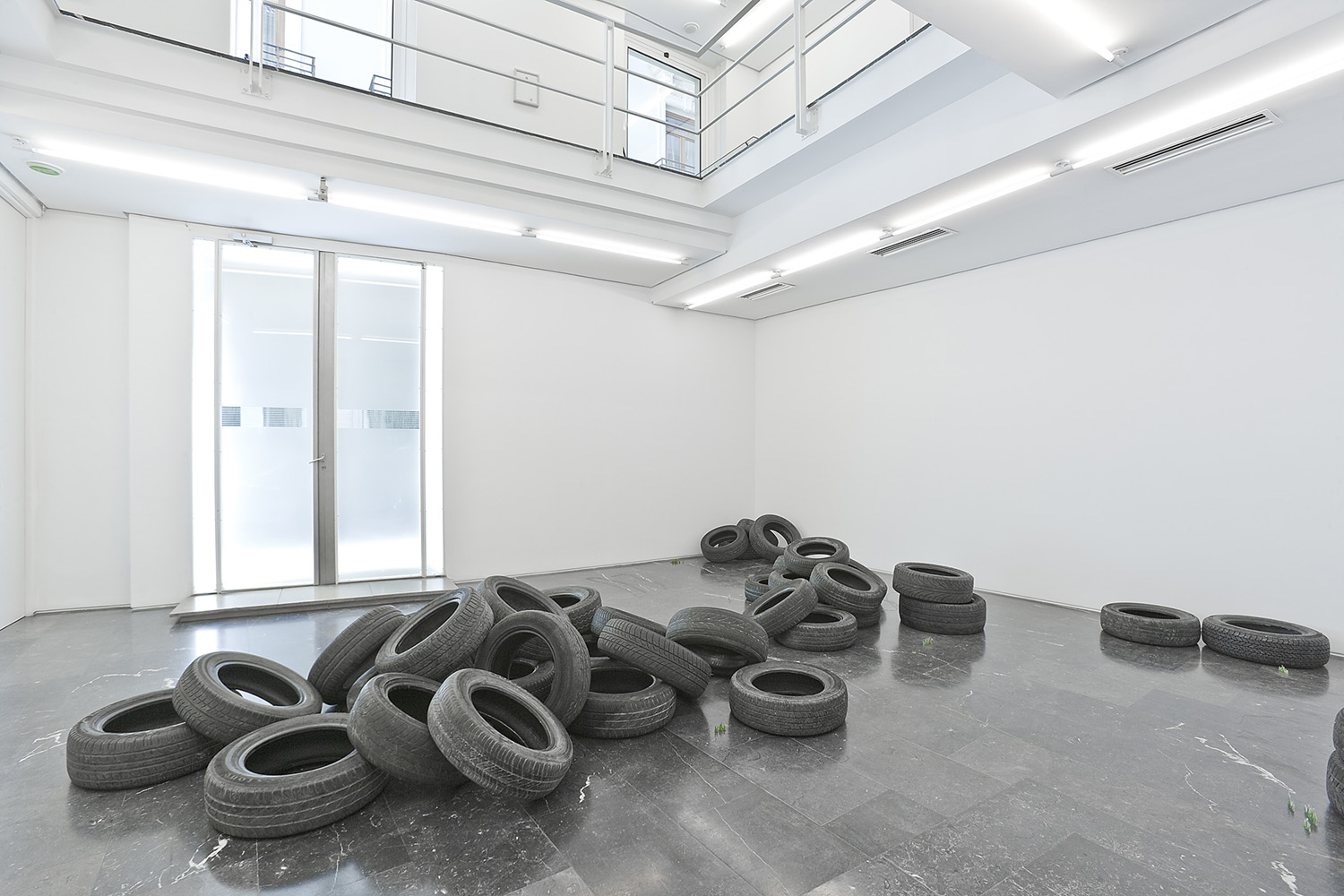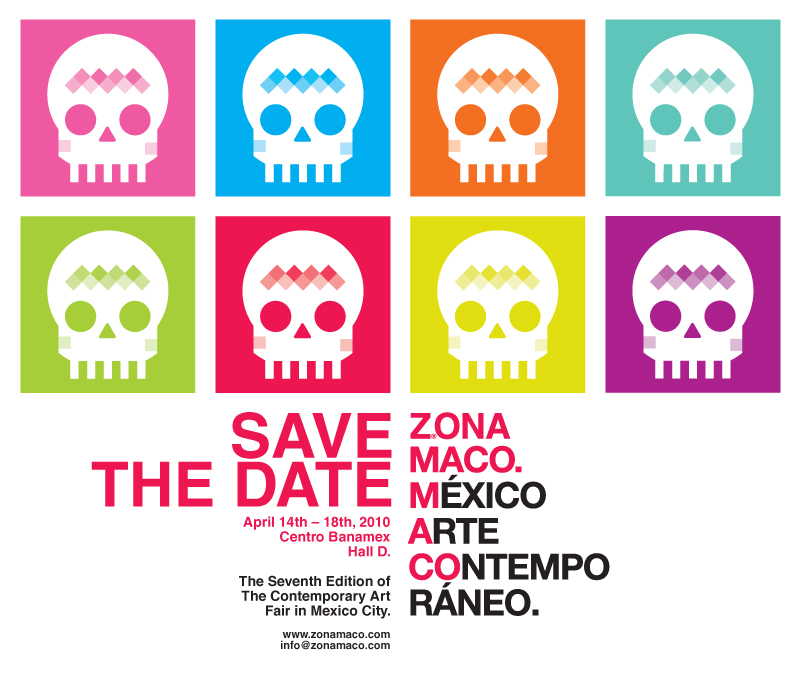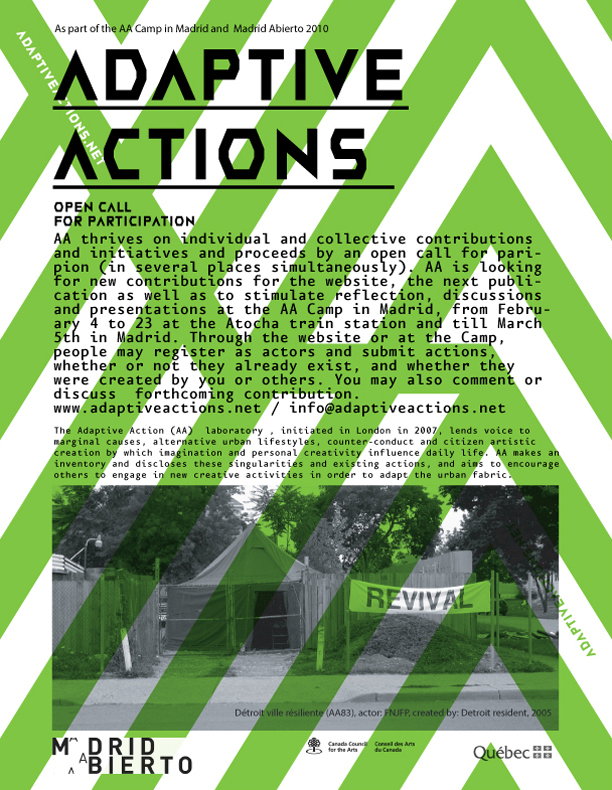2010

We all shall play in the ruins
November 12, 2010 – January 14, 2011
Luis Adelantado Gallery
Valencia, Spain
"The space of our physics, like the space of our daily lives, is thus a mere construction; an architecture thrown up by perception of the phenomena that surround us and thereby shape, for all of us, this "landscape of events" that makes philosophers and scientists mere humble landscape artists."
-Paul Virilio, The University of Disaster
We all shall play in the ruins comprises photography, installation, video, and drawing. Informed by Paul Virilio’s take on the speed of post-modern society, Mena seemingly creates a ‘landscape of events’ where motion and velocity translate to both destruction and construction. Throughout the exhibition objects and images suggest movement in various explicit and even subtle ways. A central part of the exhibition is the photographic series Points of View, where Mena uses architecture to challenge the viewer’s perception. By focusing on the malleability of perception, these images not only delineate the fragility of contemporaneity but also the apparent imperceptibility of our urban reality. Letting Go of Conceptual Approaches, a series of abstract monochromatic images shows the effect of a photochemical reaction of sunlight with hydrocarbons and nitrogen oxides that have been released into the atmosphere mostly by automotive emissions and industrial plants. A paradoxical image as we find beauty in polluted skyscapes.
Jason Mena’s work entails a multi-faceted approach to contemporaneity that, drawn from conceptualism and minimalism, reveals the complexities and contradictions of the ever-increasing urbanization of space. The City and its architecture become the main protagonist and consequently witness of the post-modern condition. Reality and fiction converge, they appear and disappear in the urban landscape, provoking multiple reactions and interpretations. Working with different media, mainly photography, video, and installations, Mena reacts to his surroundings and eerily reminds us that appearances can ultimately be deceiving. His work leads to a profound criticism of the constant simulation of culture, the speed of urbanization and the accelerated decay of our social and political climate.
http://www.luisadelantado.com/

Zona MACO
Organized by Cultura y Arte Contemporáneo Zeta S.A. De C.V.
From the April 14th - 18th, 2010
Luis Adelantado Gallery
Hall D, Stand E215
Centro Banamex
Mexico City
The seventh edition of the contemporary art fair in Mexico Zona Maco Mexico Arte Contemporaneo.
Represented Artists:
Aggtelek
Diego Bianchi
Sophie Calle
Oscar Carrasco
Andés Carretero
Marco Castro
Folkert de Jong
Fendry Ekel
Anthony Goicolea
Luis Gordillo
Rubén Guerrero
Carlos Huffmann
Bayrol Jiménez
Jason Mena
Juan Navarro Baldeweg
Richard Orjis
Miguel Rael
Oswaldo Ruiz
Morten Slettemeas
Monserrat Soto
Eduardo Sourrouille
Dario Villalba
Emilio Valdés
Priscilla Monge
We have as much time as it takes
May 6 - July 31, 2010
CCA Wattis Institute for Contemporary Arts
San Francisco, California
We have as much time as it takes calls attention to the multiple conditions that determine artistic display in the CCA Wattis Institute for Contemporary Arts. As an art gallery located within an educational institution, the Wattis Institute requires the steady production of tangible, professional results. Responding to this situation, We have as much time as it takes present practices that directly or symbolically, the often unquestioned and overlooked systems and economies related to such a situation. The show features 10 international artists and collectives working in a variety of media, including sculpture, installation, performance, and video. Many of the works are new, site-responsive commissions created especially for this exhibition.
Participating Artists:
Nina Beier and Marie Lund, David Horvitz, Jason Mena, Sandra Nakamura, Roman Ondák, Red76, Zachary Royer Scholz, Tercerunquinto, Lawrence Weiner, Christine Wong Yap
We have as much time as it takes questions and highlights expectations of achievement, productivity, and established systems of management that make up the programs and academic mission of the Wattis Institute and CCA. The artworks converge and intersect in ways that confront exhibition-making usual emphasis on visibility and timeliness, not to mention academic and institutional deadlines. The works embody circular processes, resist completion, welcome change, and refute demands for definable results and resolution. They challenge the conventional form of the art object and the traditional parameters of exhibitions.
The title comes from the 1957 film 12 Angry Men, a dramatic play that takes place entirely in a jury room where 12 men must agree on a verdict. At one point, juror number eight argues with his fellows for more time in order to adequately review the case. The exhibition’s themes emphasize careful deliberation, cooperation, and consideration, and the title points out the complex processes behind the organization of an exhibition, especially given our added challenge of 12 curators needing to come to an agreement. The title is indeed also a wry, tongue-in-cheek commentary on the finality of a graduate degree.
Lawrence Weiner’s architectural intervention quite literally exposes the inner structure of the gallery while addressing issues of authorship and instruction. Nina Beier and Marie Lund, as well as Sandra Nakamura, expose the often-unquestioned systems underlying art, academic institutions, and their relative economies. Roman Ondák’s work suggests a utopian no-time, a dream in which the calendar’s demands are never met. Christine Wong Yap’s shadowy statement satirically points to its own unobtainability. Jason Mena’s constant movement and reorganization of common classroom objects refers to the human drive to create systems and questions the productivity of such behavior, thus resonating directly with the context of an educational space. David Horvitz’s projects utilize existing systems of distribution and publication established by institutions and exhibitions. Zachary Royer Scholz engages with the detritus of the gallery and the materials of exhibition making to create temporary, conditional sculptures.
Two collectives will present newly commissioned pieces that engage directly with the venue. In an effort to define and call attention to the physical circumstances of CCA and the Wattis Institute, Tercerunquinto’s work will involve changing existing spatial dynamics by manipulating the architectural elements of public and private spaces. Red76’s central concern is to come to terms with the world and to redefine those terms—to imagine “what would happen if…?”
We have as much time as it takes is curated by second-year students about to receive their master’s degrees from CCA’s Graduate Program in Curatorial Practice. The students are Jacqueline Clay, Nicole Cromartie, Courtney Dailey, Emily Gonzalez, Jacqueline I'm, Kristin Korolowicz, Sharon Lerner, Katie Hood Morgan, Maria Elena Ortiz, Arden Sherman, Joanna Szupinska, and Josephine Zarkovich. The show has been developed with the support of Magali Arriola, adjunct professor; Julian Myers, assistant professor; and Claire Fitzsimmons, Wattis Institute deputy director. This is the first time that the program’s thesis exhibition has been presented in the Wattis galleries, and its opening is timed to coincide with the openings of CCA’s collegewide graduate thesis exhibitions. We hope in this way to deepen the relationship between our program, the Wattis’s programming, and CCA’s academic life, and to generate interdisciplinary discourses. Our status as students and curators-in-training within an educational institution and professional environment is underscored by the show’s ambition to explore the possibilities, and the limitations, of its very specific setting.
Designed by Jon Sueda / Stripe, the exhibition catalog features interviews with each of the artists; a project by Matthew Rana, a student in the Graduate Program in Visual and Critical Studies; and texts by the local poet Jasper Bernes and the writers Erica Levin and Daniel Marcus. The publication is available as a downloadable PDF.
A dynamic series of public programs will take place over the exhibition’s three-month duration, both inside and outside the gallery. On May 18 from 7–10 p.m. there will be a one-night-only screening of James Benning’s 2005 film One Way Boogie Woogie / 27 Years Later accompanied by a reception and other events. There will also be workshops with participating artists Sandra Nakamura and Red76. Check the Wattis calendar for upcoming events.
Many thanks to the Getty Foundation for its support of Magali Arriola’s participation in the Exhibition Project course.
Founding support for CCA Wattis Institute for Contemporary Arts programs has been provided by Phyllis C. Wattis and Judy and Bill Timken. Generous support provided by the Phyllis C. Wattis Foundation, Grants for the Arts / San Francisco Hotel Tax Fund, Ann Hatch and Paul Discoe, and the CCA Curator’s Forum.
Adaptive Actions Madrid
AA Publication
Madrid Abierto 2009 - 2010
Madrid
Adaptive Actions points to how urban phenomena impact on residents’ perception of the environment and their relation to it. By offering a space to share experiences, ideas, forms of actions and specific accomplishments, Adaptive Actions creates an inventory of alterations rarely visible to the public. Printed documents and organized events are being planned to increase visibility of the selected actions to the public eye, and build affiliations and communal thinking.
1. Action Fragments for the City – Interview Brian Massumi, Adaptive Actions – Madrid, AA publications, 2010-11
Project:
At the Atocha train station during the Madrid Abierto Biennial, a production and live-action Camp housed the Adaptive Actions project for almost a month. Experiences and materials – whether in the making or from past or future initiatives – were presented at the Camp. Supporters assisted actors and discussed possible additions, proposed actions and ensuing issues with participants. The program of events at the AA Camp (workshops/actions, lunch-and-learns) on specific topics and locations built bridges between actors and actions. The latter underwent prolongations, remodulations; some were launched in Madrid (as well as in other cities and countries), then collected in a joint art project.
Simultaneously, several individuals edited the existing and incoming content (submitted locally and through the web) and produced a new book which was published in December 2010. Throughout this process, actors posted new actions in the Camp, hallmarking the renewal “in the present” of adaptive actions, in counterpoint to those featured in the publication. At the AA Camp, structure and planning coexisted with the unexpected. This publication comprises two sections: one with several chosen adaptive actions and a second on the specific Madrid Adaptive Actions’ programming. This publication is constituted of 36 adaptive actions, locations and situations with images and short comments.
The publication committee:
Marie-Pier Boucher, Gema Melgar, Frank Nobert and Jean-François Prost.
Includes:
An interview with Brian Massumi, a text by José
Luis Corazón Ardura and contributions with and by AKA Gallery, Cecilia Andersson, Eirini Boubla, Amarie Bergman, Zach Blas, Claude Boullevraye de Passille, Ignacio Canete, Micha Cárdenas, Jean-Maxime Dufresne, E1000ink, Edoardo de Falchi, FEED, Fugitive Images, Chris Head, Husos, André Éric Letourneau, Luc Lévesque, Helena Franco Marco, Brian Massumi, Elle Mehrmand, Familia Melgar-Molinero, Jason Mena, Modern Activity, Aude Moreau, Frank Nobert, Paco Sanchez, SPY, Katherine Sweetman, Tetuanfotoaccion, Triiibe, Andy, Uprock, Urban Context Management, Felipe Zuñiga.
Design by:
Alexandre Bettler and Modern Activity, London
AA Publications:
Each Adaptive Actions project is revisited and extended by a publication. Submitted adaptive actions, commentaries, and texts are gathered together in one book. New ideas for future actions result from this process.
With the support of:
Madrid Abierto, the Canada Art Council and the Conseil des arts et des Lettres du Québec.
Adaptive Actions, 2010
148 pages, softcover, 21 x 14,5 cm
Colour/green and black
Bilingual, Spanish and English texts.
ISBN 978-0-9866375-0-6
12 CAD, 9 USD, 9 EUR, 7 GBP
For orders, please contact:
info@adaptiveactions.net
http://www.adaptiveactions.net/

Atocha
AA Camp Madrid
February 12 - 13, 2010
AA Presentation & Workshop
Madrid Abierto 2009 - 2010
Madrid
At the Atocha train station in Madrid, a production and live-action Camp housedp://aa.adaptiveactions.net/projectinfo/adaptive-actions-madrid-" target="_blank">Adaptive Actions project for almost a month. Experiences and materials – whether in the making or from past or future initiatives – were presented at the Camp. Supporters assisted actors and discussed possible additions, proposed actions and ensuing issues with participants.
A space of production, presentation, and actions:
At the Atocha train station in Madrid, a production and live-action Camp housed the Adaptive Actions project for almost a month. Experiences and materials – whether in the making or from past or future initiatives – were presented at the Camp. Supporters (1) assisted actors and discussed possible additions, proposed actions and ensuing issues with participants.
Actions:
VAN AS STORE
OPENING (MADRID)
I AM HERE
LOUIS EDEN PROJET
FERIA LIBRE MEMORIAL.
VEDUTA (ON GOING)
WORK IN PROGRESS
ACCIONES URBANAS ABSURDAS: DESEO QUE TE GUSTE
ACCIONES URBANAS ABSURDAS: SU USO NO JUSTIFICADO …
CHILDHOOD MEMORIES
WHERE ARE NOW THE BEAKS OF BIRDS?
POINT OF DEPARURE (ON GOING)
NOSES IN THE STREETS
EYESaa
ABISMO
Actors:
2908M
ADAPTIVEACTIONS
AMARIE
AUDEMOREAU
AUSTIN
BIANOSE
EKIPCOLLECTIVE
FERNANDEZ
FRANCOIS
HUSOS
IGNACIO B
IRES67
JASON MENA
JMAXD
JUMATELECTRO
LEFT HAND ROTATION
LUCLEVESQUE
METALICO
MICHACARDENAS
OSVALDO CIBILS
PACO SANCHEZ
QUEERTECH
ROSENSVAIGPINTOR
SASKATOON
SPYLEE
TETUANFOTOACCION
UFOSPIA
ZOZUEDZECH
ZUTACRTA
Workshops:
The program of events at the AA Camp (workshops/actions, lunch-and-learns) on specific topics and locations built bridges between actors and actions. The latter underwent prolongations, remodulations; some were launched in Madrid (as well as in other cities and countries), then collected in a joint art project. The aim, as Maurizio Lazzarato would say, is not to neutralize differences but, conversely, to enrich the concept of commonality through these differences (2). As he argues, the challenge is to find ways to retain this multiplicity, to embrace heterogeneity while maintaining disparity.
Live Publication:
The second publication (3) was developed and produced in Madrid, live and in public, within a limited timeframe. During one month in the production camp, publication material was assembled and edited. Actors could contribute directly to the selection and preparation of material on-site or by email. Throughout this process, actors posted new actions in the Camp, hallmarking the renewal “in the present” of adaptive actions, in counterpoint to those featured in the publication. At the AA Camp, structure and planning coexisted with the unexpected.
Exploratory mode:
This project expands thoughts on various themes related and complementary to architecture and art, including the concept of post-production and unplanned, un-programmed transformation and appropriation that give meaning to the city. By this process, various impressions will merge, one-off, geographically isolated acts will converge and, in vast numbers, they will take new directions, coherence, strength, and arouse interest by creating unexpected – and otherwise impossible – associations, links, and cross-references.
The project focuses on micro-actions because these prompt or modify our perception of the urban environment and their design is a reflection, an expression of behavior in tune with artistic creation. Many actions are anonymous, unsigned, clandestine, pervious to transformation – the author knows that these actions will eventually be changed, maintained or possibly eliminated by others. Their relation to the context suggests a potential re-appropriation, but the collective imagination they establish – especially if their number multiplies and if their presence becomes widely known – ensures the sustainability of a state of mind akin to artistic expression. Consciousness, signature, and participation are thus inherent to this type of project. Citizen actions suggest a different process for shaping cities, open and collaborative, responsive and crosscutting.
1 Several past and new AA collaborators, in turns, attended the Madrid AA Camp.
2 Yves Citton, Puissance de la variation, Maurizio Lazzarato, Multitudes 20, pp.187-200 and book : Puissances de l’invention. La psychologie économique de Gabriel Tarde contre économie politique, also published at Les empêcheurs de penser en rond, 2002.
3 The first Adaptive Actions publication (UK edition) was launched in March 2009. It features many actions as well as articles by Pascal Nicolas-Le Strat (France), Judith Laister (Austria), Frank Nobert and Jean-François Prost.

